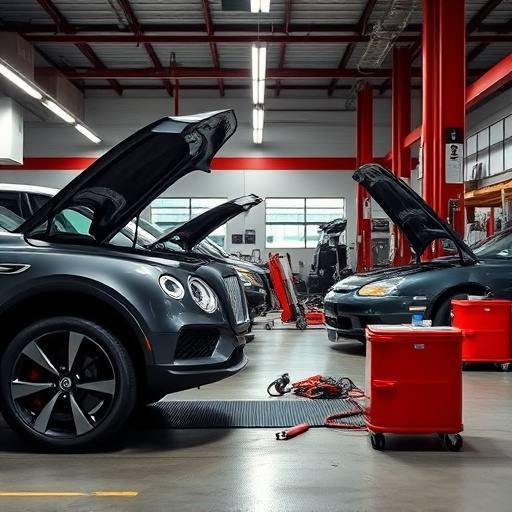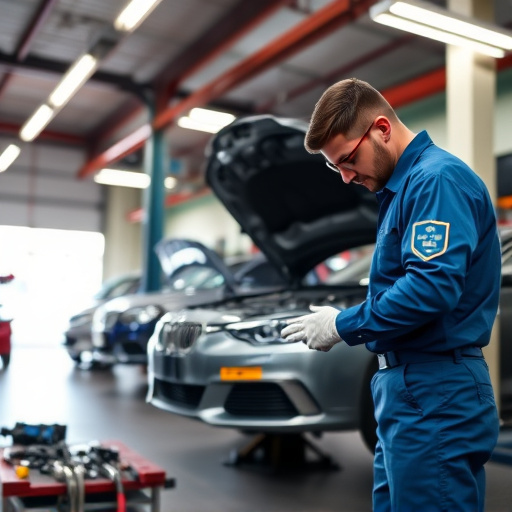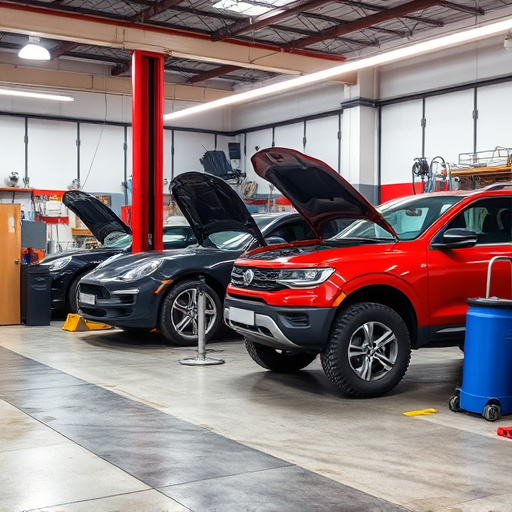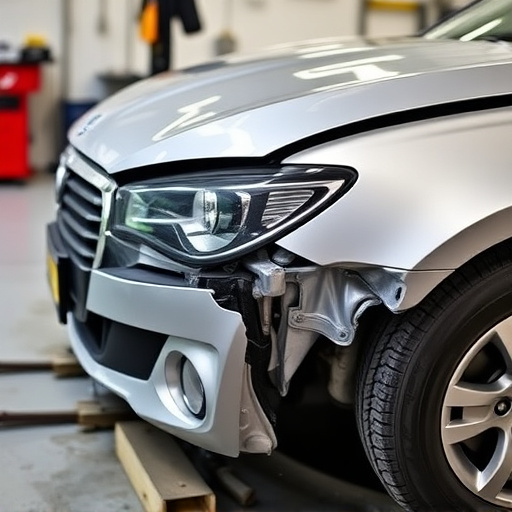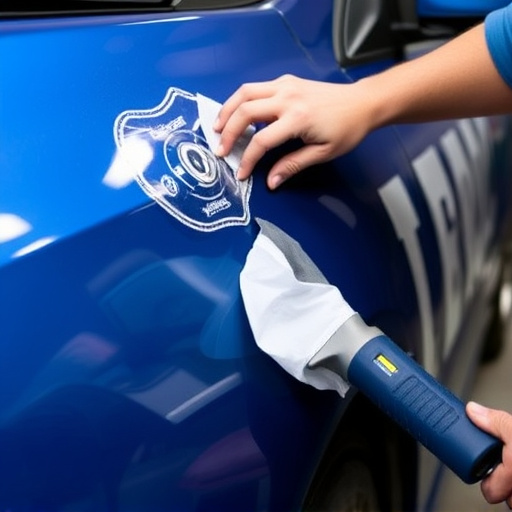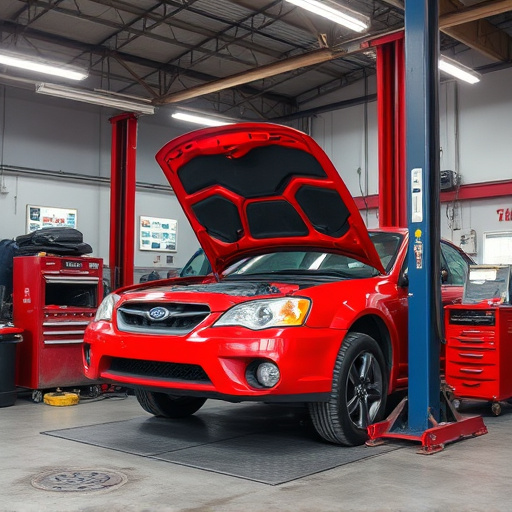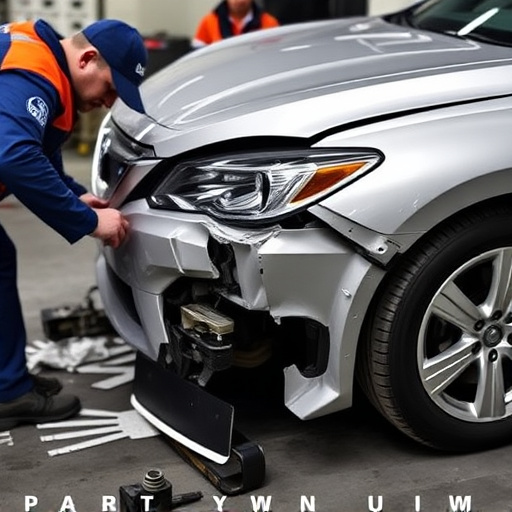Welding has progressed dramatically from its ancient roots, transforming into a sophisticated art with techniques like laser, TIG, and robotic arc welding, crucial for modern industries. These advanced methods offer unparalleled precision, improved strength, and safety in intricate designs, revolutionizing sectors such as aerospace, automotive (e.g., Mercedes Benz repair), and construction. They address efficiency, waste, and structural integrity issues, ensuring high-quality welds that extend product lifespans and enhance cost-effectiveness.
In the ever-evolving landscape of manufacturing, understanding advanced welding techniques is paramount. This article delves into the transformative journey from basic to cutting-edge methods, tracing the historical roots that led to innovations like TIG, MIG, and laser welding. We explore core concepts, including material considerations and precise heat control, that underpin these techniques. Further, we uncover diverse applications across sectors such as aerospace, automotive, and medical, highlighting advantages over conventional methods, including increased strength and reduced waste.
- The Evolution of Welding Techniques: From Basic to Advanced
- – A brief history of welding and its development
- – The need for advanced techniques in modern industries
The Evolution of Welding Techniques: From Basic to Advanced

Welding has come a long way since its early beginnings, evolving from basic forge-welding to sophisticated advanced welding techniques used today. Historically, methods like forge welding and oxyacetylene welding dominated the scene, serving well for simple fabrication tasks. However, as industrialization picked up pace, so did the demand for more precise, efficient, and versatile joining methods.
This led to the birth of advanced welding techniques that cater specifically to complex industries such as aerospace, automotive (including vehicle repair and auto body restoration), and construction. Modern advancements like laser welding, robotic arc welding, and TIG (Tungsten Inert Gas) welding offer unparalleled precision, improved material strength, and enhanced safety features compared to their traditional counterparts. These advanced techniques are pivotal in achieving seamless joins on intricate designs found in contemporary vehicles and other structures, pushing the boundaries of what’s possible in various applications, including vehicle body repair.
– A brief history of welding and its development

Welding has evolved from a rudimentary practice to become a cornerstone of modern manufacturing and construction. Its origins can be traced back to ancient times when early civilizations used basic techniques like forge welding to join metal. However, it was during the Industrial Revolution that welding truly began to take shape as a versatile and efficient joining method. The development of arc welding in the late 19th century marked a significant milestone, revolutionizing the industry with its ability to melt and join metals without the need for heat sources like fire.
Over the years, welding has progressed from simple forge welding to complex advanced techniques. Today, it plays an indispensable role across various sectors, including automotive, aerospace, and construction. Advanced welding techniques such as laser welding, TIG (Tungsten Inert Gas) welding, and robot-assisted welding have transformed industries like car bodywork services and car paint repair by offering precision, speed, and enhanced structural integrity. These innovations not only cater to the demands of contemporary manufacturing but also push the boundaries of what’s possible in metal fabrication and assembly.
– The need for advanced techniques in modern industries
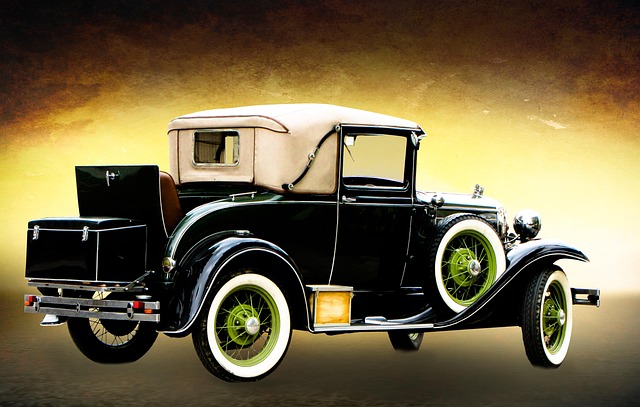
In today’s fast-paced industrial landscape, advanced welding techniques have become a cornerstone for innovation and precision across various sectors. From automotive manufacturing to complex machinery repairs, the demand for seamless, high-quality welds drives the need for sophisticated methods that go beyond conventional practices. Modern industries, particularly those involved in car bodywork and restoration, such as Mercedes Benz repair, are constantly seeking ways to enhance efficiency, reduce material waste, and achieve structural integrity unparalleled by traditional welding processes.
Advanced welding techniques offer solutions to these challenges by providing greater control over heat input, allowing for more precise fusion and minimizing the risk of damage to surrounding materials. This is particularly crucial in delicate car restoration projects where preserving original components while making necessary repairs demands a high level of skill and specialized knowledge. As industries evolve, the adoption of these advanced methods ensures that welds meet stringent quality standards, foster longer-lasting products, and contribute to overall cost-effectiveness in manufacturing and maintenance processes.
As we’ve explored the evolution of welding techniques, it’s clear that advanced methods have become indispensable in today’s industrial landscape. By mastering these sophisticated techniques, welders can enhance precision, speed, and the structural integrity of their work. Understanding the fundamentals and staying abreast of innovations in advanced welding techniques empowers professionals to adapt to evolving industry needs, ensuring the creation of high-quality, durable welds across diverse applications.



